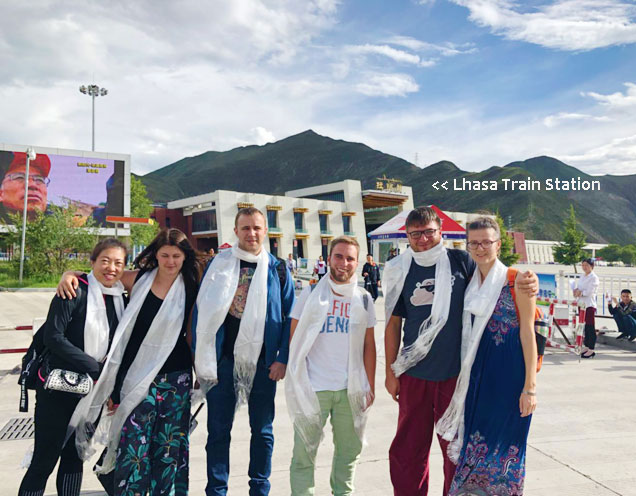
"Excellent Tour, best experience"
"A unique experience despite a difficult context thanks
to an experience team of organisers"
1. Can I travel independently in Tibet?+
2. Is it safe to travel in Tibet?+
Yes, it is safe to travel around Tibet. Most local people are friendly and devout believers of Tibetan Buddhism, whose spirit is to be kindhearted.
Due to the high altitude, many tourists may have altitude sickness in Tibet. In order to lessen their symptoms, we have prepared oxygen carriers and generators for emergency use. If the symptoms are serious, our experienced drivers will drive to nearest hospitals.
3. When is the best time to travel to Tibet?+
The best time to travel to Tibet is from April to early June and September to November. In fact, Tibet is worth a visit all year round, because the sceneries vary in different season. If you like winter view, winter is also good travel time with clearest snow-capped mountains and the most colorful rivers. However, the roads in Tibet might be frozen in winter. Please ask us for the exact weather if you plan to travel in winter.
4. How to apply for the Tibet Travel Permits?+
In order to apply for a Tibet Travel Permit, you need to apply for a Chinese visa in the Chinese embassy or consulates in your country first. If you book a tour with us, we will send an invitation letter to you to help you apply for a Chinese visa.
Once you get a Chinese visa, please send the photocopies of the visa and your passport to us, and we will apply for the Tibet Travel Permit for you. Please note that international tourists must book a tour with a local travel agency in Tibet if they want to travel to Tibet.
After the permit is issued, we will send it to your hotel or the places you stay in China. You need to show the permit while boarding on a train or flight to Tibet. The government do not allow travel agencies to send the permit overseas.
5. Should I worry about altitude sickness when travelling in Tibet?+
The average elevation of the region is over 4,000 meters and altitude sickness is a common concern for travelers visiting Tibet. Not everybody will suffer from altitude sickness when traveling in Tibet and most visitors will be in good condition when they arrive.
The symptoms of altitude sickness can include headache, nausea, dizziness, and shortness of breath. It is important to allow time to acclimate to the high altitude and to take precautions to prevent altitude sickness. Travelers should drink plenty of water, avoid alcohol and caffeine, and eat light meals that are high in carbohydrates. It is also recommended to take it easy for the first few days, avoiding strenuous activities and allowing time to adjust to the new altitude when arrive in Lhasa. Some travelers may also benefit from taking medication to prevent or treat altitude sickness.
If symptoms of altitude sickness persist or worsen, it is important to seek medical attention immediately. Many hotels and travel agencies in Tibet have oxygen supplies on hand to help alleviate the symptoms of altitude sickness. It is important to consult with a doctor before traveling to Tibet, especially if you have a history of heart or lung problems, high blood pressure, or other medical conditions that may be affected by high altitude.
6. Is Tibet Nepal Border Open to Tourists?+
Good News! The wait is finally over - Gyirong Port (China Nepal Border) is open to tourism and ready to welcome you with open arms, in 2023. Currently, the Gyirong Port is used for tourism, while the Zhangmu Port is primarily used for freight (not for tourists).
7. What is Tibet Travel Permit+
8. Can I Apply for a Tibet Permit on My Own?+
9. What is the tourism situation of Tibet in different seasons?+
High Season (May–Sep)
The warmest weather makes travel, trekking and transport easiest.Prices are at their highest peaking in July and August as summer holiday comes, and it is recommended to book ahead during the 1 May and 1 October national holidays.
Shoulder (Apr, Oct–Nov)
The slightly colder weather means fewer travellers and a chance to explore in depth and meet the locals. Prices are cheaper than during the high season.
Low Season (Dec–Feb)
Very few people visit Tibet in winter, so you’ll have the place largely to yourself. Hotel prices and many entry tickets are discounted, but some restaurants close due to the lack of tourists.
10. How to Get to Tibet?+
For most international travelers, getting to Tibet will involve at least two legs: first to a gateway city such Kathmandu (Nepal) > or Mainland China and then into Tibet.
11. How to Plan Your Tibet Tour?+
How to Plan Your Tibet Tour?
If you're a first-time visitor to Tibet, we recommend spending 8 to 15 days exploring thise region. This will give you enough time to acclimate to the high altitude, as well as to visit some of the most important cultural and historical sites in the area.
Tour Lhasa city and surroundings 4 Days or 5 Days
For 4 days, it is highly recommended to visit Lhasa Private Tour for Best Highlights
For 5 days, it is highly recommended to visit Lhasa Essence Tour with Great Three Monasteries
Add 2 or 3 More Days to Visit Gyantse & Shigatse
For 5 days, it is highly recommended to visit Lhasa & Yamdrok Lake Private Tour
For 6 days, it is highly recommended to visit Lhasa Yamdrok Lake Shigatse Private Tour
Add 2 More Days to Mount Everest
For 7 days, it is highly recommended to visit Tibet Nepal Overland Tour from Lhasa to Gyirong via EBC
For 8 days, it is highly recommended to visit Tibet Discovery Tour from Lhasa to Mount Everest Base Camp
To extend further, you can cover Mount Kailash (3 Days), Guge Kingdom & Zanda Earth Forest (1 Day), Namtso Lake (1 Day), etc.
9 Days Panorama Tibet Tour from Lhasa to EBC with Namtso Lake
15 Days Mount Kailash Pilgrimage Tour with Lhasa Shigatse & EBC
1. Do I need to get a Tibet permit to visit Lhasa? How long does it take to obtain?+
All foreign travelers are required to obtain a Tibet Travel Permit to visit Lhasa and Tibet. The permit can only be applied for through a registered travel agency in Tibet (we are local based Tibet travel agency with office setting in Lhasa) and is required to purchase flight or train tickets to Tibet. Travelers should plan ahead and allow sufficient time for the permit application process, as it can take two weeks to obtain the necessary permits.
2. What are some of the most popular attractions in Lhasa?+
Lhasa is home to many world-famous iconic attractions, each offering a unique insight into the region's rich cultural and spiritual heritage. Here are some of the most popular attractions in Lhasa:
3. When is the best time to visit Lhasa?+
The best time to visit Lhasa is during the spring and autumn months, from April to May and from September to November. During these months, the weather in Lhasa is mild and pleasant, with clear blue skies and comfortable temperatures. Summer, from June to August, can be rainy, and the region can get crowded with tourists. However, it's a great time to witness traditional Tibetan festivals, like Shoton Festival and explore the stunning natural beauty of this mysterious land.
4. How to get to Lhasa? By air or by train, which one is better?+
There are usually two ways to get to Lhasa , depending on your starting point and travel preferences.
(1) By Air: You can fly to Lhasa Gonggar Airport from major cities in China such as Beijing, Shanghai, Chengdu, Chongqing, and Guangzhou, as well as from some international destinations such as Kathmandu, Nepal. The airport is located about 62 kilometers (38.5 miles) from Lhasa and can be reached by taxi or bus.
(2) by train The Qinghai-Tibet Railway connects Lhasa with several major cities in China, including Beijing, Shanghai, Chengdu, Xian, and Xining. The train journey is a popular way to reach Lhasa as it offers stunning views of the Tibetan plateau and the Himalayan mountain range. However, the journey can take several days, so it's important to plan accordingly.
Once you arrive in Lhasa, our team at Asia Odyssey Travel will be there to greet you with English-speaking guides and experienced drivers. We'll escort you from the airport or train station to your hotels in Lhasa.
5. Should I worry about altitude sickness when travelling in Lhasa (Tibet)?+
Due to its high altitude of over 3,650 meters, high altitude sickness can be a concern for travelers visiting Lhasa. However, don't worry - most travelers are able to adjust to the altitude and experience Lhasa without any issues.
Here are some tips to help prevent and manage altitude sickness during your Lhasa tour:
(1) Acclimatize slowly: It's important to acclimatize gradually to the high altitude by spending a few days in Lhasa before undertaking any strenuous activities. This will give your body time to adjust to the thinner air and lower oxygen levels.
(2) Stay hydrated: Drink plenty of water and other fluids to avoid dehydration, which can worsen altitude sickness symptoms.
(3) Avoid alcohol, tobacco, and caffeine: These substances can dehydrate you and make it more difficult for your body to acclimatize to the high altitude.
(4) Eat light and healthy meals: Eat light, nutritious meals to help your body adjust to the high altitude and avoid heavy or greasy foods that can make you feel more sluggish.
(5) Take medication: Medications such as acetazolamide (Diamox) can help prevent altitude sickness by increasing ventilation and reducing fluid buildup in the lungs. However, it's important to consult with a doctor before taking any medication for altitude sickness.
(6) Rest: Take breaks and rest often during your Lhasa tour to give your body time to adjust and avoid overexertion.
1. What kind of permits do I need to visit Shigatse, Tibet?+
Foreigners who wish to do a Tibet Shigatse Tour will need two documents to apply for before entering Tibet for travel. These documents are the Tibet Travel Permit (TTB permit; Lhasa) and Aliens' Travel Permit (PSB permit; Shigatse, Mount Everest Base Camp). Contact the AOT Team for all the Tibet Permits you need for free and enjoy a worry-free trip with us.
2. What are the most popular attractions in Shigatse?+
Shigatse is renowned for its rich Tibetan culture and history. Some of the most popular attractions in and around Shigatse include Yamdrok Lake, Karola Glacier, Perklor Monastery, Tashilhunpo Monastery, and Mt. Everest Base Camp.
On the way to Shigatse of Tibet, you won't miss the natural wonders like Yamdork Lake(Holy Lake) and Karola Glacier (the location of the film Red Valley/Hong He Gu). If you head to Shigatse via Gyantse, you should pay a visit to Perklor Monastery which is famous for its 100-Thousand-Buddha Pagoda and is one of the most important cultural relics in Tibet. You can also catch a view of Gyangtse Fortress (Gyantse Dzong) from there.
The top highlight of Shigatse is Tashilhunpo Monastery, which was founded by His Holiness the 1st Dalai Lama. It is also good spot to have a stunning bird's eye view of Shigatse City. Shigatse is the gateway to Mt. Everest Base Camp, and you can have a photograph stop at Gyawu La Pass (5,200m) for a glimpse of Mount Everest, the Himalayas, and the zigzag road that looks winding to the end of the world. Before reaching Mount Everest Base Camp, you can have the first incredible view of the Mount Everest summit from the Rongbuk Monastery, which is the highest monastery in the world. Then enjoy the starry night in EBC and have the chance to witness a sunrise over the north side of Mt. Qomolangma (Mt. Everest).
3. When is the best time to visit Shigatse?+
The best time to visit Shigatse is from May to October when the weather is generally mild and dry, with clear skies providing stunning views of the holy mountains and briliant landscapes. The temperature is also more comfortable, with average temperatures ranging from around 10°C to 20°C during the day.
In the winter months, from November to April, Shigatse of Tibet can be very cold with temperatures dropping well below freezing. However, if you are interested in winter sports or photography, the winter months can offer some unique and beautiful scenery to capture.
4. How to get to Shigatse? By road or by train, which one is better?+
You can get to Shigatse from Lhasa by both road and train. Daily buses and trains run between Lhasa and Shigatse. Although Shigatse Heping Airport/Xigaze Peace Airport of Tibet is located in Shigatse, there are currently no regular flights available for tourism.
You can take a flight to Lhasa Gonggar Airport and then take a bus or private car to Shigatse. It takes about 5 to 6 hours to drive from Lhasa to Shigatse (270km). By road, you can have the chance to have a quick stop on two amazing natural landscapes - Yamdrok Lake and Karola Glacier.
Alternatively, you can take a train from Lhasa to Shigatse which to takes around 2.5 hours. During the train journey, you can have breathtaking views of the Tibetan plateau through the train window.
So by road/car or by train, it depends on your preferance for time, places of interst along the way, and overall travel plans. Train travel is faster and more convenient while road travel allows for more photograph stops.
5. Should I worry about altitude sickness when take the train via Qinghai-Tibet Railway?+
Extending 1,956 kilometers on the Qinghai-Tibet Plateau, the Qinghai-Tibet Railway connects, Xining (2,200m), capital of Qinghai Province, and Lhasa (3,650m), capital of Tibet. The train from Xining to Lhasa runs at an altitude of 4,000m above sea level, and the highest point is 5,072 m. For Xining Tibet Tours, you will usually spend a night in Xining, which is at 2,200m above sea level. This will help you adjust to the altitude before boarding the train.
Besides, taking the train via the Qinghai-Tibet Railway can actually help alleviate altitude sickness. The train is equipped with oxygen supply systems and pressurized carriages, which can regulate air pressure and provide additional oxygen to passengers.
Due to the high altitude, it is advisable to undergo a physical examination before traveling to Tibet. Be sure to let your companions or the train staff know whenever you feel unwell or need help. The people there are always willing to assist and are experienced in dealing with altitude. Most of our guests who finished their Xining Tibet Tour did not suffering altitude sickness.
1. Do I need to get a Tibet permit to visit Tibet Everest Base Camp?+
All foreign travelers who wish to visit Mount Everest from the Tibet side are required to obtain a Tibet Travel Permit and Alien's Travel Permit. These permits can only be obtained through a registered travel agency in Tibet. As a local based Tibet travel agency, we can assist travelers in the permit application process.
It's important to note that the Tibet Travel Permit is required to purchase flight or train tickets to Tibet. Therefore, travelers should plan ahead and allow sufficient time for the permit application process, as it can take one to two weeks to obtain the necessary permits.
2. When is the best time to visit Mount Everest Base Camp?+
The most recommended time for visiting Mount Everest is from April to June and September to November. During these months, the weather is relatively stable, and the skies are clear, providing optimal visibility of the mountain. The temperatures are also mild, making it easier for travelers explore Mount Everest Base Camp and surrounding area. It's advisable to check the latest Everest Base Camp weather reports and consult with our professional travel consultant before planning your Tibet trip.
3. How many days do you need to visit Tibet Everest Base Camp?+
For a classic exploration from Lhasa to Mount Everest Base Camp, it is highly recommended to take our 8 Days Lhasa - Yamdrok Lake - Shigatse - Mount Everest - Lhasa tour.
Besides, if you plan to trek to the base camp, you will need to allow at least a few days for acclimatization before starting the trek. The trekking can take 4-5 days, depending on your pace and the route you take.
If you plan to visit other attractions in Tibet, such as Lhasa, Yamdrok Lake, Shigatse, or Mount Kailash, you will need to allow additional time, which may take around 8 to 15 days. The number of days required to visit Tibet Mount Everest depends on the route you take and the activities you plan to do. Please remember, all the tours can be customized to suit your preferences and needs.
4. How do you get to Tibet Everest Base Camp?+
Travelers can get to Tibet Everest Base Camp from China Tibet side or Nepal side. To reach the Everest Base Camp on the Tibet side, travelers can either take a flight or a train to Lhasa, the capital of Tibet, and then travel by road to the base camp. From Lhasa, it takes around 8-10 hours directly to Tibet EBC, depending on the route taken. Some travelers prefer to join a tour group to explore from Lhasa to Shigatse to Everest Base Camp for 4 days to ensure a smooth and hassle-free journey.
If traveling from Nepal, you will cross the Gyirong Border and then travel by road to Everest Base Camp.
5. Where do you Live at Tibet Everest Base Camp?+
There are two options for accommodation near the Everest Base Camp on the Tibet side - one is to live at the temporary tented camps and the other is at Rongbuk Monastery Guesthouse.
(1) During the peak tourist season from April to October, temporary tented camps are set up to accommodate travelers. These camps provide basic facilities, such as food, accommodation, and medical assistance, to visitors. However, due to the cold weather and climate, the tents are only available during this period. Staying in the tent guest house offers a unique opportunity to appreciate the snow-capped and mighty Mount Everest at close range.
(2) In winter, the Rongbuk Monastery Guesthouse is the only place to stay close to Mount Everest, as the tents at the base camp are removed during this time. The guesthouse offers basic facilities and accommodation to visitors, and it's important to note that the weather conditions can be harsh and challenging during this period.
6. Do I need to be in good physical condition to take a Tibet Everest Base Camp tour?+
It's recommended that travelers be in good physical condition before taking a Tibet Everest Base Camp tour, as many tours involve trekking and hikingg at high altitudes. The Everest Base Camp, located on the Tibet side, has an average elevation of 5,200 meters above sea level. Travelers with heart or lung problems, high blood pressure, or other medical conditions that may be affected by high altitude should consult with their doctors before traveling to Tibet.
7. Should I worry about altitude sickness when travelling in Tibet?+
The average elevation of the region is over 4,000 meters and altitude sickness is a common concern for travelers visiting Tibet. Not everybody will suffer from altitude sickness when traveling in Tibet and most visitors will be in good condition when they arrive.
The symptoms of altitude sickness can include headache, nausea, dizziness, and shortness of breath. It is important to allow time to acclimate to the high altitude and to take precautions to prevent altitude sickness. Travelers should drink plenty of water, avoid alcohol and caffeine, and eat light meals that are high in carbohydrates. It is also recommended to take it easy for the first few days, avoiding strenuous activities and allowing time to adjust to the new altitude when arrive in Lhasa. Some travelers may also benefit from taking medication to prevent or treat altitude sickness.
If symptoms of altitude sickness persist or worsen, it is important to seek medical attention immediately. Many hotels and travel agencies in Tibet have oxygen supplies on hand to help alleviate the symptoms of altitude sickness. It is important to consult with a doctor before traveling to Tibet, especially if you have a history of heart or lung problems, high blood pressure, or other medical conditions that may be affected by high altitude.
8. Which city/destination to start a Tibet tour?+
Tibet Tours can be started from various cities in China, such as Beijing, Shanghai, Chengdu, Chongqing, Xining, Guangzhou, and more. Additionally, visitors can also start their Tibet tours from Nepal, as it is a neighboring country with convenient transportation options to Tibet
1. How much does Kailash trip cost?+
Whether you're traveling in private way or with a small group, there are some tours available for exploring Mount Kailash and the surrounding region. If you are looking to save money with a guided tour, our Tibet Small Group Tour is the perfect option.
With a small group tour, you'll have the opportunity to share the cost of a guide, driver, private vehicle, and other expenses with other members of the group, making it an affordable and cost-effective way to explore the beauty and spirituality of Tibet. At just USD$1877 per person, our 15-day Tibet group tour with Mount Kailash is an unbeatable value. Book now.
2. How many days required to visit Mount Kailash?+
For most travelers, the journey to Mount Kailash begins in Lhasa and ends in Lhasa, with a typical tour taking around 15 days to complete. Along the way, travelers can enjoy stops at various points of interest, such as Namtso Lake, Yamdrok Lake, and Mount Everest, before embarking on the physically demanding Kora trek around Mount Kailash, which usually takes around three days to complete.
However, there are also other tour options available for visiting Mount Kailash, such as starting in Lhasa and exiting Tibet from the Gyirong Border to Nepal, or entering Tibet from Nepal and ending the tour in Lhasa, with visits to Mount Kailash and Mount Everest along the way.
No matter which option you choose, the duration of your Mount Kailash trip can be fully customized to meet your individual preferences and requirements.
3. When is the best time to visit Mount Kailash?+
To experience the beauty and spirituality of Mount Kailash, it's best to plan your visit between April to June and September to October. During these months, you can avoid the rainy season and muddy roads, which can make travel difficult and uncomfortable.
It's important to note that at other times of the year, such as during winter months, the entire region is often covered in thick snow, making it unsuitable for sightseeing or undertaking the Kora trek.
4. How do I get to Mount Kailash from Tibet?+
The most common way to reach Mount Kailash is by road from Lhasa, the capital of Tibet. The journey takes around three to four days, with stops at some spots along the way, such as Namtso Lake, Yamdrok Lake, and Mount Everest. From Lhasa, you can go with a private tour or join a guided tour to reach Mount Kailash. Another option is to travel to Mount Kailash from Nepal. You can cross the border at the Gyirong Port and then join a guided tour to reach Mount Kailash.
5. What can you expect on a 3-day Mount Kailash trekking tour?+
The Mount Kailash trek covers a distance of about 52 kilometers, and involves crossing several high passes and steep ascents and descents.
(1) On the first day of the trek, you'll start from Darchen, the base camp for Mount Kailash, and hike for around six to seven hours to reach the first campsite at Dirapuk Monastery. Along the way, you'll pass through stunning landscapes, including the Lha Chu Valley and the rocky cliffs of Drolma Chu.
(2) On the second day, you'll continue the trek and cross the highest point of the Kora, the Drolma La Pass, which is located at an altitude of 5,630 meters (18,471 feet). From here, you'll descend to the second campsite at Zutul-Puk Monastery, which is located in a picturesque valley with stunning views of Mount Kailash.
(3) On the final day of the trek, you'll hike for around three to four hours to reach the end of the Kora at Darchen. Along the way, you'll pass through the beautiful countryside and small villages, before finally arriving back at the base camp.
1. What documents do I need if I take a train to Tibet from Xining?+
As a foreigner who wants to do a Tibet Tour , it is essential to apply for the Tibet Travel Permit (TTB permit; Lhasa) before entering Tibet for travel. If your tour in Tibet covers areas beyond Lhasa, aditional permits for Tibet are required, such as the Aliens' Travel Permit (PSB Permit; Shigatse, Mount Everest Base Camp), and Military Travel Permit (Shannan, Kailash). You can contact AOT Team for all the Tibet Permits you need for free and enjoy a worry-free trip with us. Your guide in Xining can help to arragne your train boarding with your Tibet permit.
2. Is it hard to buy the Train Ticket from Xining to Lhasa, Tibet?+
Xining is the starting point of the famous Qinghai-Tibet Railway , annd it is convenient to reach Xining from other cities by air or bullet train. Furthermore, taking a Tibet train from Xining to Lhasa is the quickest way to experience the best Train Journey to Tibet. Therefore, Train Tickets from Xining to Lhasa are very popular, expecially during peak season, when the demand for train tickets can far exceeds the supply. However, we will manage to secure the ticket. Contact AOT Team ahead of the time, and we will try our best to ensure you a lifetime memory on your train journey to Tibet from Xining.
3. Should I worry about altitude sickness when take the train via Qinghai-Tibet Railway?+
Extending 1,956 kilometers on the Qinghai-Tibet Plateau, the Qinghai-Tibet Railway connects, Xining (2,200m), capital of Qinghai Province, and Lhasa (3,650m), capital of Tibet. The train from Xining to Lhasa runs at an altitude of 4,000m above sea level, and the highest point is 5,072 m. For Xining Tibet Tours, you will usually spend a night in Xining, which is at 2,200m above sea level. This will help you adjust to the altitude before boarding the train.
Besides, taking the train via the Qinghai-Tibet Railway can actually help alleviate altitude sickness. The train is equipped with oxygen supply systems and pressurized carriages, which can regulate air pressure and provide additional oxygen to passengers.
Due to the high altitude, it is advisable to undergo a physical examination before traveling to Tibet. Be sure to let your companions or the train staff know whenever you feel unwell or need help. The people there are always willing to assist and are experienced in dealing with altitude. Most of our guests who finished their Xining Tibet Tour did not suffering altitude sickness.
4. Is it safe to take the train to from Xining to Tibet?+
Yes, it is absolutely safe to take the train to from Xining to Tibet. The crime rates in the train are notably low. The train is equipped with modern safety features, including fire alarms, smoke detectors, and security cameras. Additionally, the train staff undergoes regular safety training to ensure the safety of passengers.
5. What does the train from Xining to Tibet offer?+
The train from Xining to Tibet offers a comfortable and scenic way to travel through the Qinghai-Tibet Plateau. It provides a unique and unforgettable travel experience. Here are some facilities equipped on the train from Xining to Lhasa/Tibet:
1.Sleeping Berths: The train has four types of sleeping options, including soft sleeper, hard sleeper, soft seat, and hard seat.
2.Dining cars: The train offers a variety of meals, snacks, and beverages in dining cars. If Chinese and Tibetan dishes is not to your taste, you can bring some instant food.
3.Toilets/Restrooms: The train has both Western-style and squat-style toilets available in each soft sleeper carriage. However, passengers should be prepared for their towels, toilet paper, and hand sanitizer.
4.Oxygen supply systems: The train is equipped with oxygen supply systems and supplemental oxygen to help passengers adjust to the high altitude.
5.Observation decks:Enjoy the breathtaking views of the Tibetan Plateau.
6. What is the highlights of the Qinghai-Tibet Railway?+
The Qinghai-Tibet Railway means the train journey from Xining to Lhasa which is one of the most scenic train journeys in the world.Take the train from Xining to Tibet, you will passing through vast grasslands, snow-capped mountains, high-altitude lakes, yaks and herders’ tents, and barren deserts. Keep your eyes peeled throughout the journey for antelope, foxes, and Kiang, plus the occasional nomad.
There is even a popular song in China called “Take a train to Lhasa”. Listen to the beautiful songs during a train journey from Xining to Lhasa (about 21.5 hours by train) to appreciate the charming beauty of the Tibetan Plateau.
7. How can I arrive in Xining? By Train or by Flight?+
Xining is capital of Qinghai province and is well connected by air and high speed rail. You can arrive in Xining by either train or flight, depending on your preference and location.
There is a Xining Caojiapu international airport operating many international and domestic airlines. Travelers can go to Xining by air directly from most cities of China, like Beijing (2.5 hours), Xian (1.5 hours), Chengdu (1.5 - 2 hours), Shanghai (3 hours), Lhasa (2.5 hours), Hangzhou (3 hours)...
There are two main train stations in Xining: Xining Railway Station and Xining West Railway Station. Both Train stations offer convenient connections to various destinations in China, including Tibet via the Qinghai-Tibet Railway.You can take the high speed train to Xining from Xian (5.5 - 6 hours), Langzhou (2.5 - 3.5 hours), Chengdu (10.5 hours), etc.
By Train or by Flights? Both options are convenient and comfortable, and the choice between them depends on your personal preference and travel plans.
Contact AOT Team if you need help with the tickets booking.
8. How many train stations are there in Tibet? Do Lhasa, Shigatse, and Nyingchi have train stations?+
There are several train stations in Tibet that are served by the Qinghai-Tibet Railway . For traveller who want to enjoy a nice jouney in Tibet would like to take the trains connect with Shigatse, Lhasa , and Nyingzhi.
1. Lhasa Railway Station
Lhasa Railway Station is located in the capital city of Lhasa. This station serves as the terminal station for the Qinghai-Tibet Railway and offers connections to other cities in Tibet, such as Shigatse (2.5 hours) and Nyingchi (4 hours). It also offers connections to other parts of China.
2. Shigatse Railway Station
Shigatse Railway Station is located in the city of Shigatse. This station offer convenient connections to Lhsasa and provide access to popular tourist destinations, such as Perklor Monastery, Tashilhunpo Monastery, Rongpuk Monastery, and Mount Everest. It takea about 2.5 hours to reach Lhasa from Shigatse by train.
3. Nyingchi Railway Station
Nyingchi Railway Station is located in the city of Nyingchi, which is known for its stunning natural scenery and biodiversity. It takea about 4 hours to reach Lhasa from Nyingchi by train. This train journey is one of the most scenic Train journeys in the world, passing through breathtaking landscapes of snow-capped mountains, deep river valleys, and pristine forests.
Contact AOT Team if you need help with the tickets booking.
9. How to get to Tibet by Train?+
The Qinghai-Tibet Railway is the world's highest railway and provides a scenic journey to Tibet. The train passes through stunning landscapes, including snow-capped mountains, vast grasslands, and high-altitude lakes. It is also a more affordable option than air travel and allows for gradual acclimation to the altitude. The main gateway cities for traveling to Tibet by train are Beijing, Shanghai, Xian, Chengdu, Chongqing, Guangzhou, and Xining. The journey time varies from 22 to 55 hours depending on your departure city.
1. What kind of permits do I need to do Tibet Trekking Tours?+
As a foreigner who wants to do a Tibet Tour, it is essential to apply for the Tibet Travel Permit (TTB permit; Lhasa) before entering Tibet for travel. If your Tibet Trekking Route covers areas beyond Lhasa, aditional permits for Tibet are required, such as the Aliens' Travel Permit (PSB Permit; Shigatse, Mount Everest Base Camp), and Military Travel Permit (Shannan, Kailash). You can contact the AOT Team for all the Tibet Permits you need for free and enjoy a worry-free trip with us.
2. What are the most popular Trekking Routes in Tibet?+
Tibet offers many opportunities for adventure, including hiking, trekking, and mountaineering. Here are six of the most popular and classic/mature Tibet Trekking Routes for your reference:
1. Old Tingri to EBC Trek
2. Ganden to Samye Trek
3. Mount Kailash Trek
4. Tsurphu to Yangpachen Trek
5. Rongbuk Monastery to EBC Hike
6. Ganden Monastery Kora Hike
3. When is the best time to do Tibet Trekking Tour?+
4. Should I worry about altitude sickness when trekking in Tibet? Any other notes?+
Before starting your Tibet Trekking Tour, you should always follow your doctor's advice regarding altitude based on your health condition. It is advisable to follow your doctor's advice regarding altitude based on your health condition. It is good to avoid altitude sickness by slowing down, keeping warm, drinking water frequently, avoiding showers for the first one or two days, taking it easy, and sleeping well. You will usually have enough time to stay in Lhasa to adjust to the altitude before starting your trekking tour.
Here are some additional notes to keep in mind for your Tibet Trekking Tour:
1. Due to the high altitude, it is advisable to undergo a physical examination before traveling to Tibet.
2. Be sure to inform your guide or the hotel staff if you feel unwell or need help. They are always willing to assist and are experienced in dealing with altitude sickness.
3. When trekking in Tibet, it is essential to stay within sight of your tour guide as getting lost in remote areas with altitudes ranging between 3,650m and 5,300m can be dangerous.
4. There is a significant temperature difference between day and night in Tibet, and the ultraviolet rays can be very strong. Therefore, it is important to bring warm clothes and sunscreen to protect yourself from the harsh weather conditions.
5. Normally, ordinary trekking equipment is sufficient for the trek, with trekking shoes being the most important. Other warm clothing should be prepared according to your needs. Our team in Tibet would provide the camping gears according to your trekking route.
5. Is it safe to do Tibet Trekking Tour?+
Yes, it is absolutely safe to do Tibet Trekking Tour. The crime rates in Tibet are notably low and the Tibet Trekking Route we organize are classic and mature. Although the trekking altitudes can range between 3,650m and 5,300m, you will always have enough time to acclimate to the altitude before starting your Tibet Trekking Tour. Your guide and the staff are experienced in trekking tours in Tibet, knowledgeable in dealing with altitude sickness, and always willing to help during the trekking days.
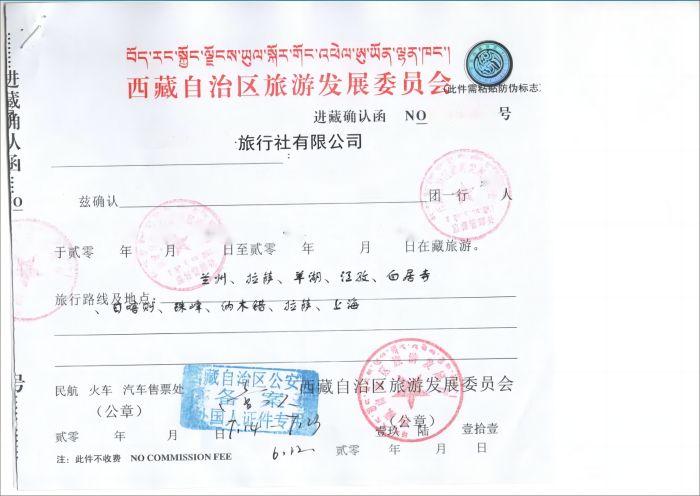
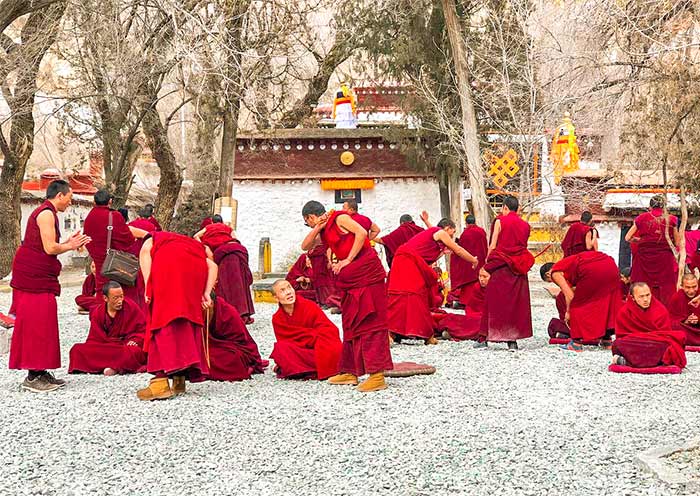
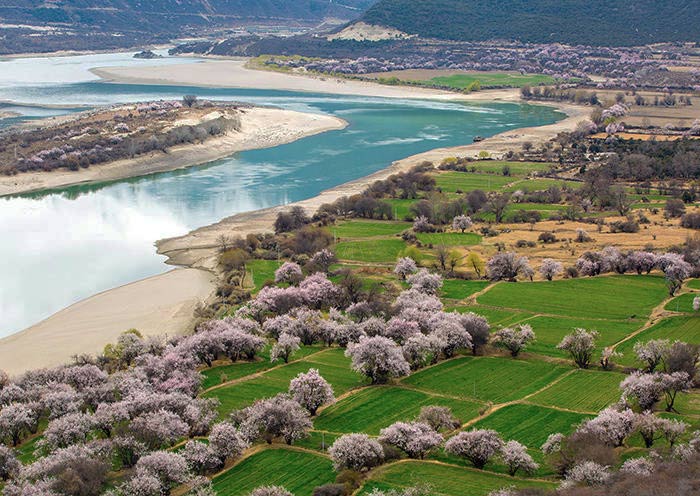
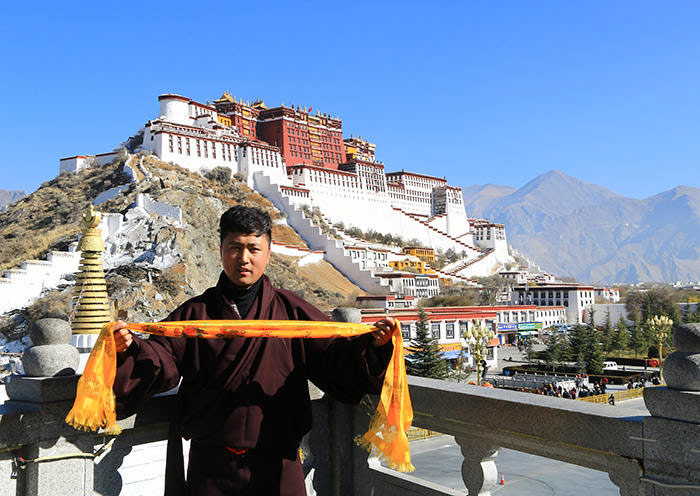
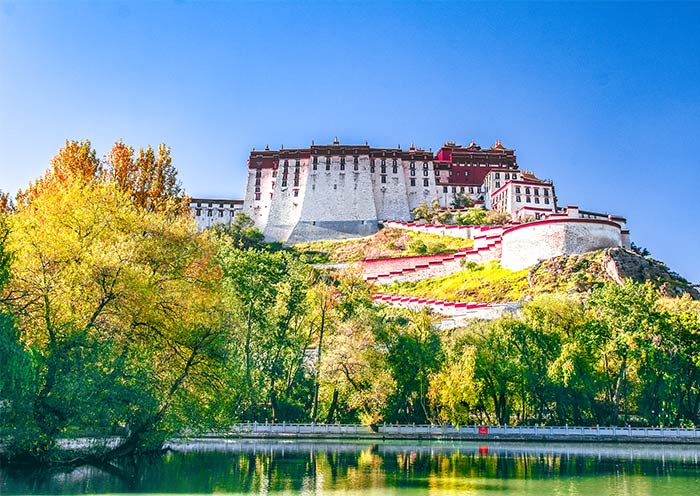
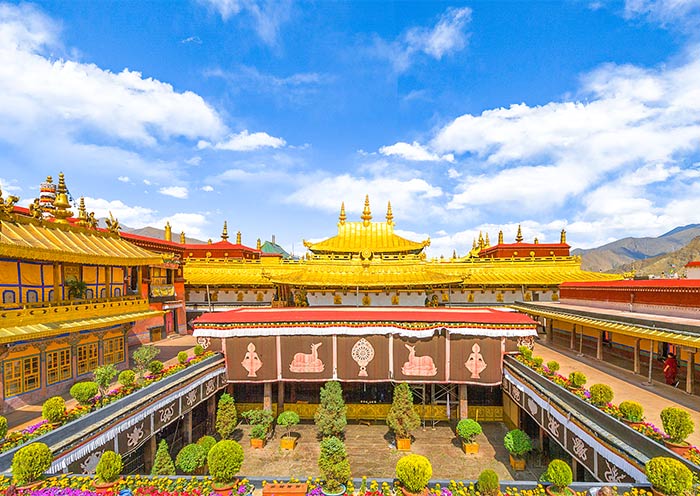
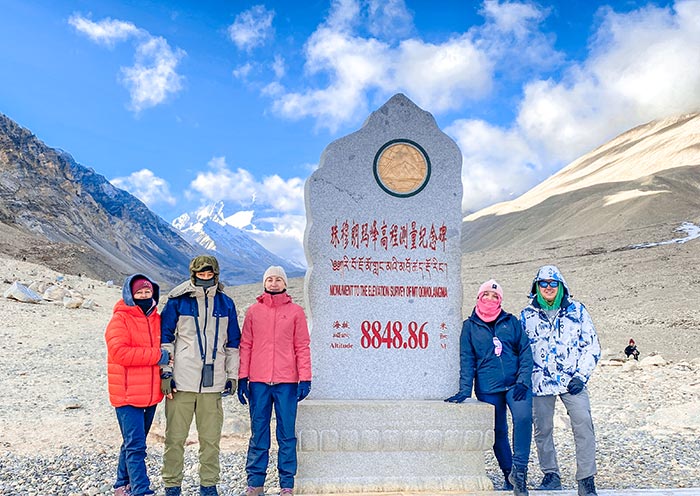
Create a tour based truly on your preferences, including all aspects of your travel in the destination